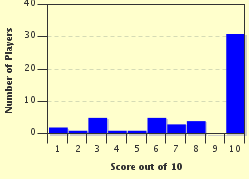
Father of the King (or Queen) Trivia Quiz
Although most British monarchs inherited their title and position from their father, there were quite a few whose fathers were never kings of the country. Can you match up these fathers with their majestic offspring?
A matching quiz
by Fifiona81.
Estimated time: 3 mins.
